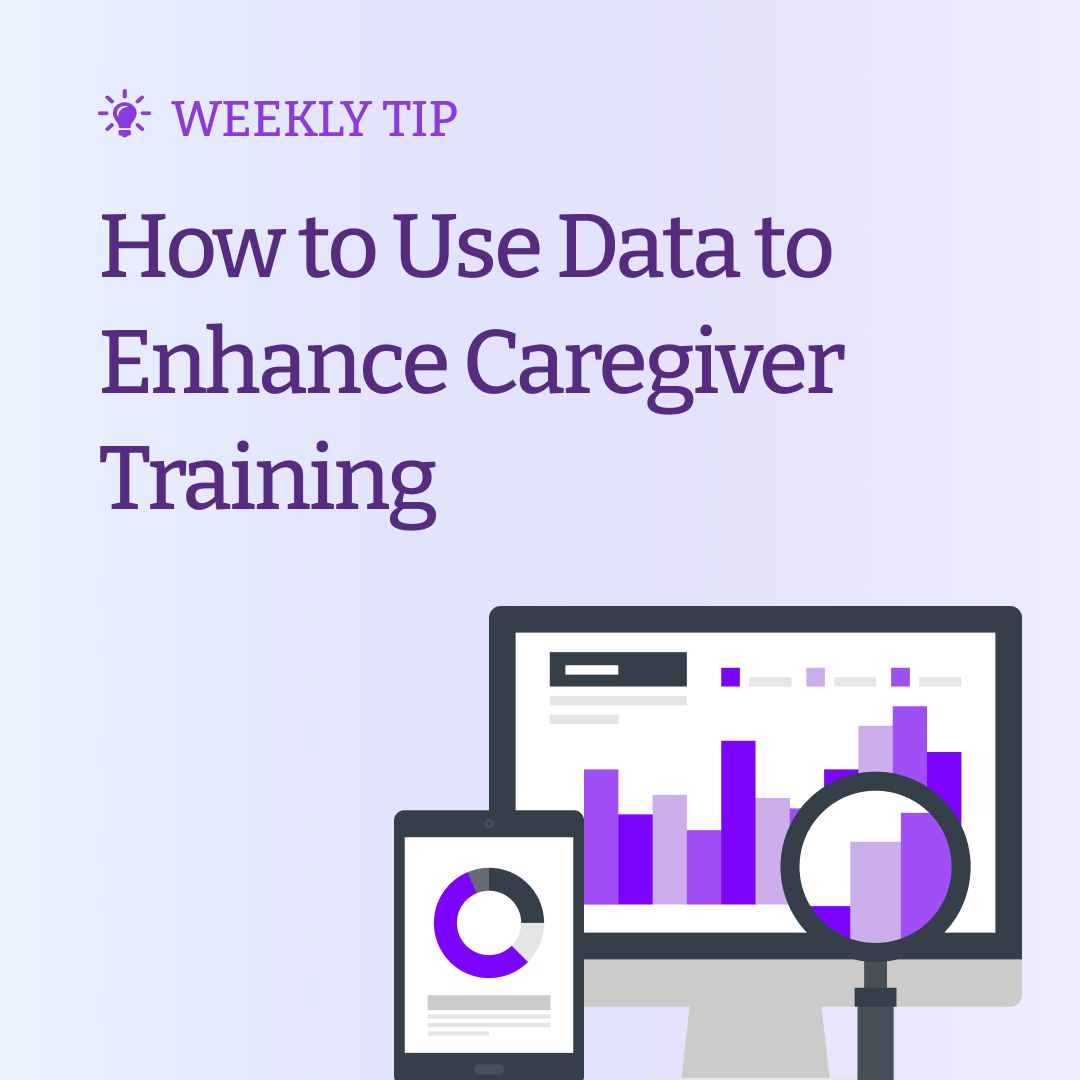Using data to enhance caregiver training will not only improve quality of care but will aid in both caregiver and client retention…
A recent study found that out of the top 10 complaints that caregivers have, little or no training was the fourth.
Lack of caregiver training can lead to friction with clients, poor job performance, and low client and caregiver satisfaction. With soaring demand for care and a shortage of healthcare professionals, care agencies are often faced with the dilemma of sending a caregiver out with insufficient training, or not staffing a case at all.
The tool that can best equip you to optimize caregiver training without investing resources that you don’t have is to use data to enhance training. This will allow you to prioritize existing issues, personalize training, and track results.
Here are some ways to use data to enhance caregiver training:
✅ Assess Performance:
Data can be used to assess the performance of caregivers, providing insight into the areas where they excel and those where they need improvement. This information can be gathered through regular assessments and patient satisfaction surveys. New technological developments are making this process easier and more scalable than ever, and also provide objective data that is not based on “he-said, she-said” accounts that surveys rely on.
✅ Identify Training Needs:
Based on the data collected, it’s possible to identify the training needs of caregivers. For example, if Sensi.AI‘s Virtual Care Agent picks up on difficulty with transferring, helpful tips can be brought up at the next staff meeting. This will not only increase client and caregiver satisfaction, but is also key in preventing injuries for both parties.
✅ Personalized Training:
Data can be used to personalize training for caregivers, tailoring it to their individual needs and areas for improvement. By understanding the strengths and weaknesses of caregivers, training can be customized to focus on the areas where they need the most support.
✅ Monitor Progress:
Data can be used to monitor the progress of caregivers over time, tracking their performance and improvement in specific areas. This information can be used to adjust training programs as needed and to celebrate caregivers’ achievements.
✅ Evaluate Training Effectiveness:
Data can be used to evaluate the effectiveness of caregiver training programs. By comparing the performance of caregivers before and after training, it’s possible to determine if the training is having a positive impact. This component is key when investing in costly training programs and outside consultants, allowing you to make wiser decisions on how to invest your resources.
While data-driven caregiver training requires an initial investment as you onboard the right tools and make operational adjustments, the lasting effects will aid not only in retaining caregivers but will dramatically improve quality of care and ultimately translate to increased revenue.
